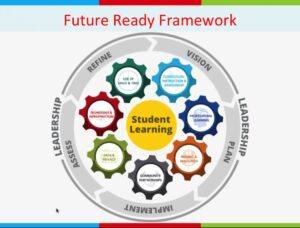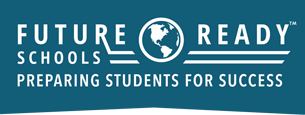This is a guest blog by Thomas C. Murray @thomascmurray and Brianna Hodges @EduTECHtastic
Spending on educational technology has continued to climb to record levels, equating to billions of dollars per year in the U.S., despite the stagnation of many school district budgets. As school leaders around the country consider investing in technology as a way to improve student learning outcomes, it’s imperative that they seek a “return on instruction” (ROI). To do so, they must understand what research has shown to be effective when infusing technology tools for learning. What is it that actually works?
What the Research Says
Using Technology to Support At-Risk Students’ Learning1, one of the top reports on the topic, from the Alliance for Excellent Education and the Stanford Center for Opportunity Policy in Education (SCOPE) indicates that, when implemented properly, technology can help boost engagement and produce significant gains in student achievement, particularly among students most at risk (Darling-Hammond, et. al, 2014). After reviewing more than 70 research studies on the effective use of educational technology, Dr. Linda Darling-Hammond and her team at Stanford University were able to provide concrete examples of classroom learning environments in which technology made a positive impact in the learning outcomes of at-risk students, as well as those uses of technology that were far less effective.
The report identifies three critical components to the successful infusion of technology. They are:
(1) The use of technology for interactive learning;
(2) The use of technology to explore and create rather than to “drill and kill;” and
(3) Utilizing the right blend of teachers and technology.
With the ability of adaptive technology to provide “interactive learning” experiences and create a more personal approach for students, high quality instructional practices can be amplified, resulting in improved learning outcomes. As such, school leaders have found themselves buying a myriad of devices, pushing them out to buildings, and hoping the tools will have a positive impact. Nationwide, we see a trend where school leaders are rushing to purchase technology, with little to no systemic implementation plan or long-term vision for a shift in instructional pedagogy or mindset.
Planning for Implementation
So how can districts systemically plan for implementation and the effective use of technology? Future Ready SchoolsⓇ (FRS)2, lead by the Alliance for Excellent Education and a vast coalition of over 60 partner organizations including TCEA, is a bold initiative to maximize personalized learning opportunities and help school districts move quickly toward preparing students for success in college and careers. FRS helps districts build capacity to:
- Lead with a vision for learning, not technology;
- Plan before the purchase of technology;
- Maximize a “return on instruction;”
- Build trust and support educators through personalized professional learning opportunities; and
- Systemically develop a culture of innovation.
The Future Ready Framework
 The backbone of FRS is the Future Ready Framework3, an innovative, research-based support for school leaders. At the heart of the framework is personalized student learning, which can be achieved through the systemic implementation of seven “gear” areas, as follows:
The backbone of FRS is the Future Ready Framework3, an innovative, research-based support for school leaders. At the heart of the framework is personalized student learning, which can be achieved through the systemic implementation of seven “gear” areas, as follows:
Curriculum, Instruction, and Assessment
Curriculum, instruction, and assessment are tightly aligned and redesigned to engage students in 21st century, personalized, technology-enabled, deeper learning. Curricula and instruction are standards-aligned, research-based, and enriched through authentic, real-world problem solving. Students and teachers have robust and adaptive tools to customize the learning, teaching, and assessment, ensuring that it is student-centered and emphasizing deep understanding of complex issues. Assessments are shifting to be online, embedded, and performance-based.
Personalized Professional Learning
Professional learning is the vehicle that drives a pedagogical shift. Professional learning that is relevant, systemic, and ongoing is most effective. Non-traditional forms of professional learning, such as the use of social media and edcamps, are valued, not dismissed. Such opportunities ultimately lead to improvements in student success and create a broader understanding of the skills that comprise success in a digital age.
Use of Space and Time
Personalized student learning requires changes in the way instructional time is used and the learning space is designed. This type of system adapts learning to meet the needs, pace, and interests of the learner to become more personal in nature. A shift in pedagogy also requires a shift in the space in which the learning takes place.
Robust Infrastructure
The effective use of technology provides tools and resources that increase teaching opportunities and promote efficiency, but is dependent on ubiquitous connectivity and access. High quality technology and infrastructure systems within a school district are essential to making personalized student learning a reality. Such environments make anytime, anywhere learning possible.
Data and Privacy
Data privacy and security are foundational elements of personalized learning. The district ensures that sound data governance policies are enacted and enforced to ensure the privacy, safety, and security of confidential information. Data is used to support a more personal approach to teaching and learning.
Budget and Resources
The transition to digital learning requires strategic, long-term budgeting and leveraging of resources for short and long term sustainability. Such plans ensure fiscal responsibility and a learning return on investment.
Community Partnerships
Community partnerships include the formal and informal local and global community connections and relationships that advance the school’s learning goals. Schools that are future ready have a dynamic brand presence where the community is an essential thread woven into a district’s culture.
The outside ring of the framework, and what holds all of the interworking gears together, is collaborative leadership. Simply put, you, as an educator capable of leading, are foundational in creating future ready schools. Critical to a successful transformation is your ability to create and support a culture of innovation that builds the capacity of all stakeholders to work collaboratively toward a transformed learning experience.
Today’s generation of students, regardless of the zip code they call home, both deserve and need, greater opportunity than the traditional education structure has previously afforded those in the past. This isn’t simply an educational issue to debate, but an economical issue that will have a lasting impact on generations to come. You are part of the solution.
For more on Future Ready SchoolsⓇ, visit www.futureready.org and be sure to check out one of the eight free regional institutes being held in 2017. Included in these institutes and throughout 2017, will be strands specifically for district leaders, principals, librarians, IT, and instructional coaches.
References:
1. Darling-Hammond, L., Zielezinski, M., and Goldman, S. (2014). Using Technology to Support At-Risk Students’ Learning. The Alliance for Excellent Education and Stanford Center for Opportunity Policy in Education (SCOPE).
2. Future Ready Schools®. (2015). Alliance for Excellent Education. Retrieved from www.futureready.org
3. Future Ready Framework. (2015). Alliance for Excellent Education. Retrieved from dashboard.futurereadyschools.org/framework
This guest blog post was written by Thomas C. Murray, who serves as the director of innovation for Future Ready SchoolsⓇ, located in Washington, D.C., and was recently recognized as the 2017 Education Thought Leader of the Year. Connect with him on Twitter at @thomascmurray. Brianna Hodges serves as the director for digital learning for Stephenville Independent School District (TX), and was recognized as the Instructional Technologist of the Year from TCEA in 2017. She is also an advisor for the national Future Ready SchoolsⓇ Initiative. Connect with her on Twitter at @EduTECHtastic.


Comments are closed.